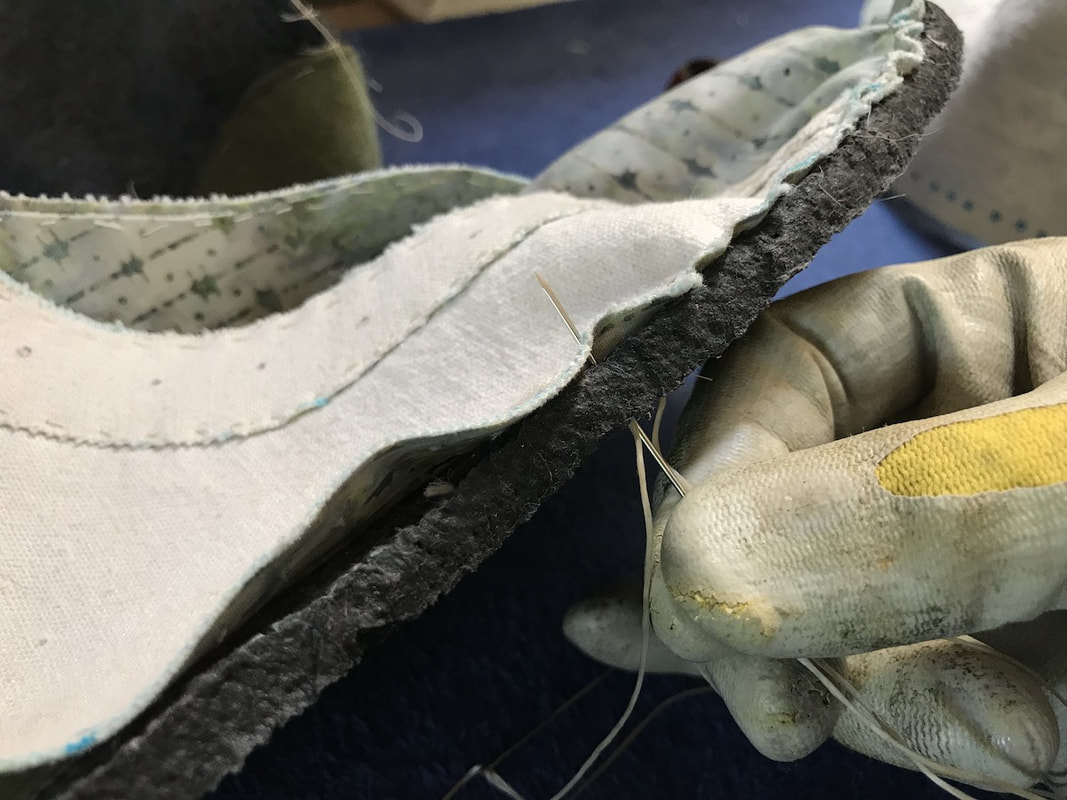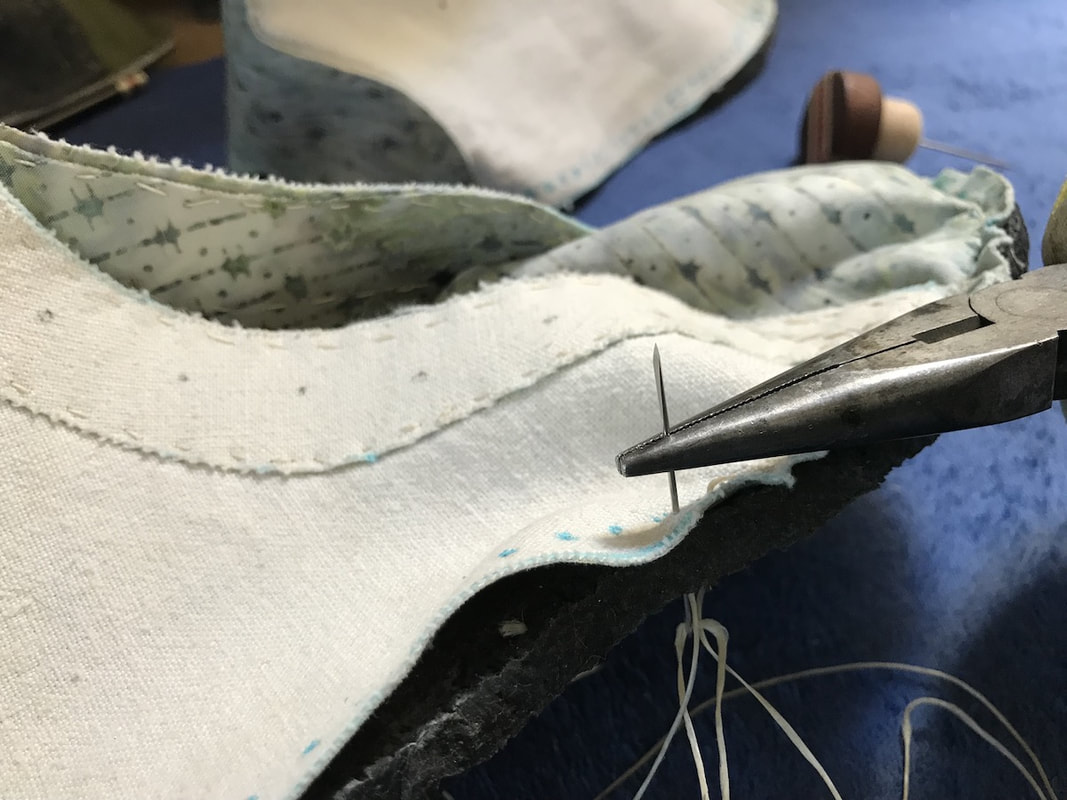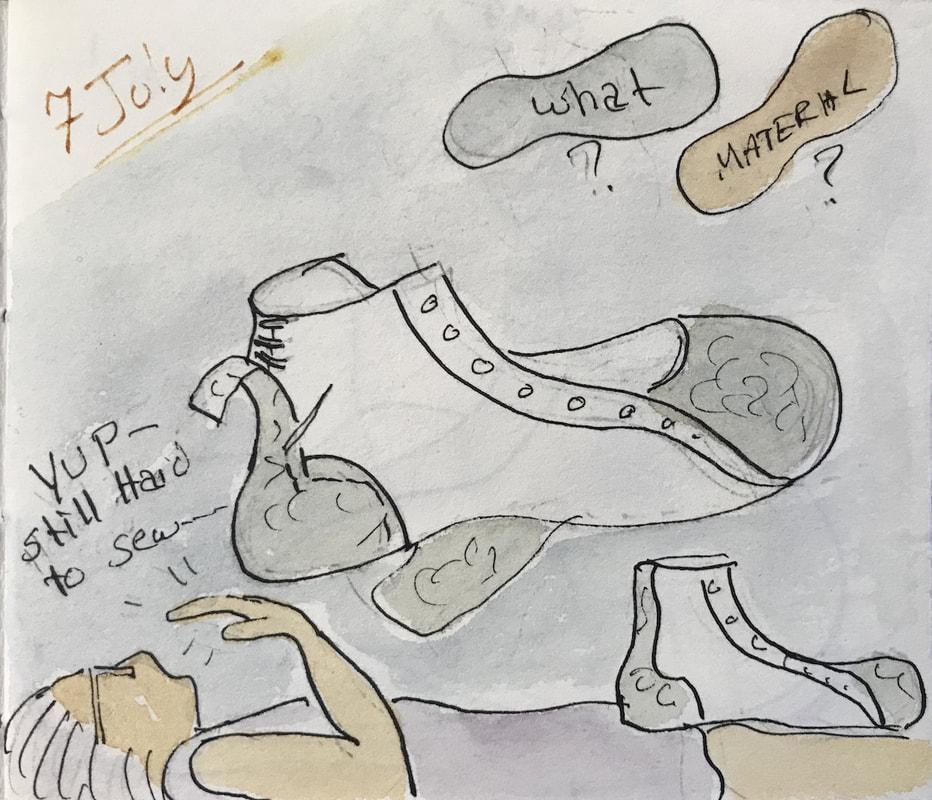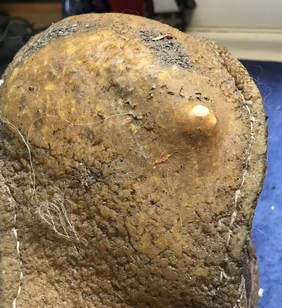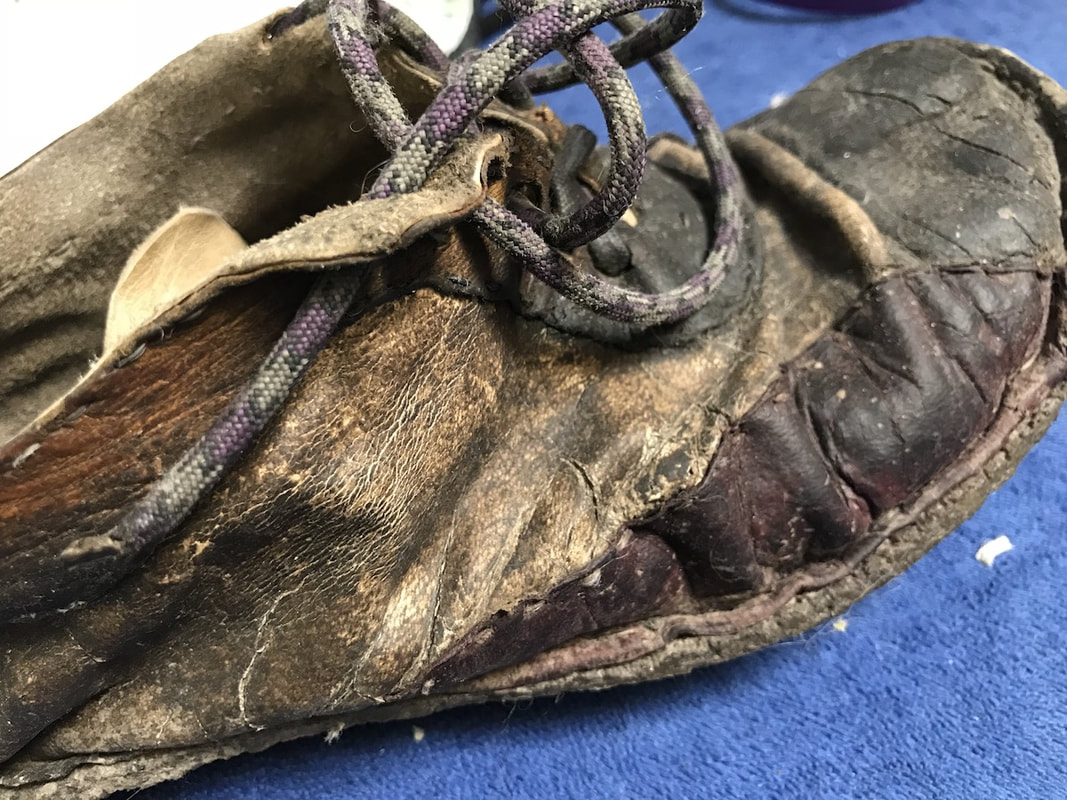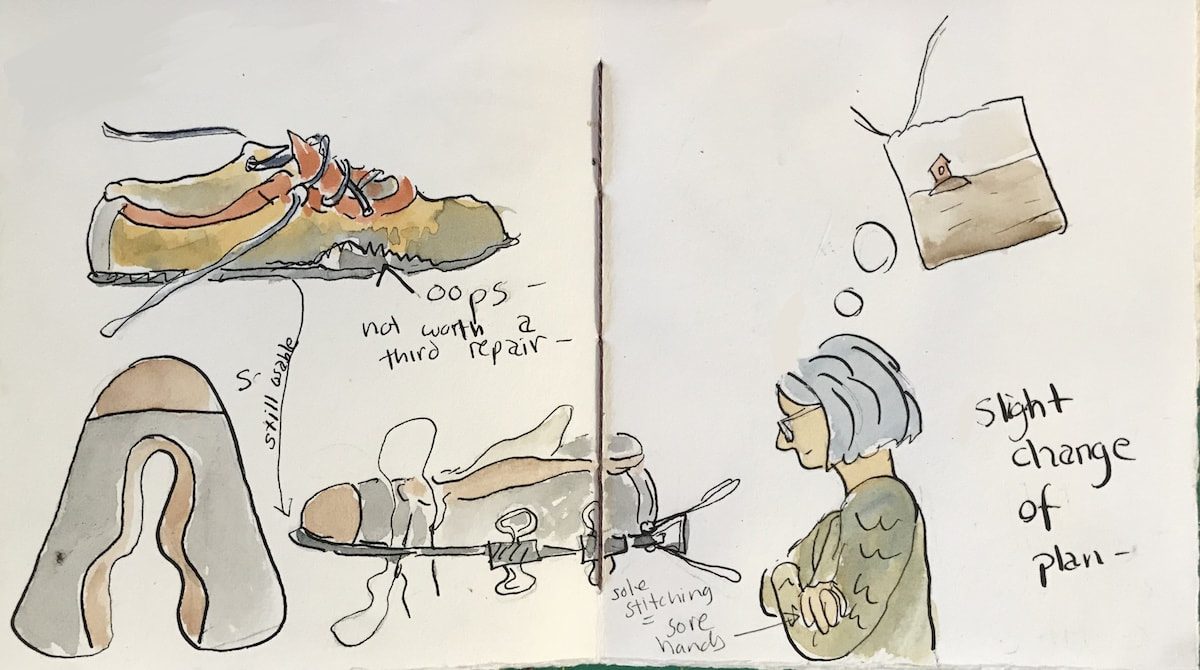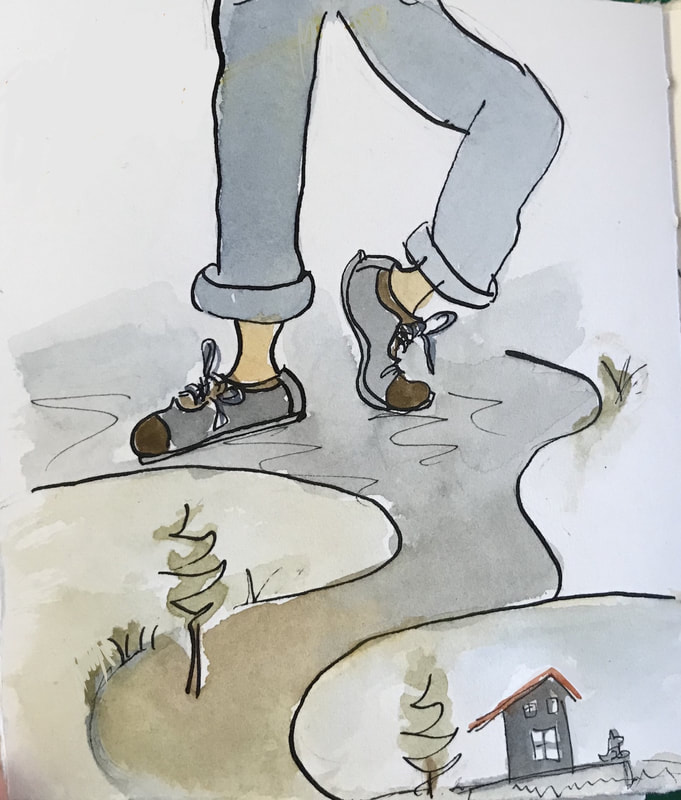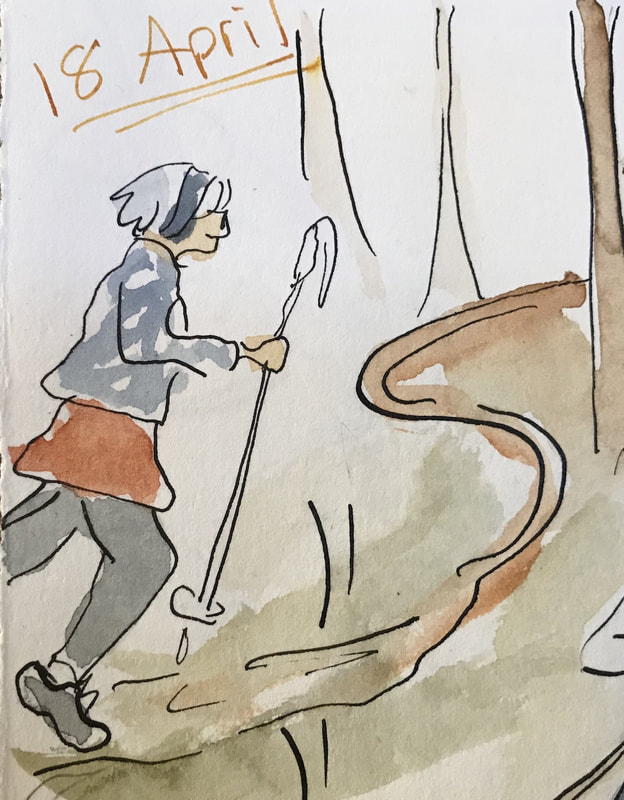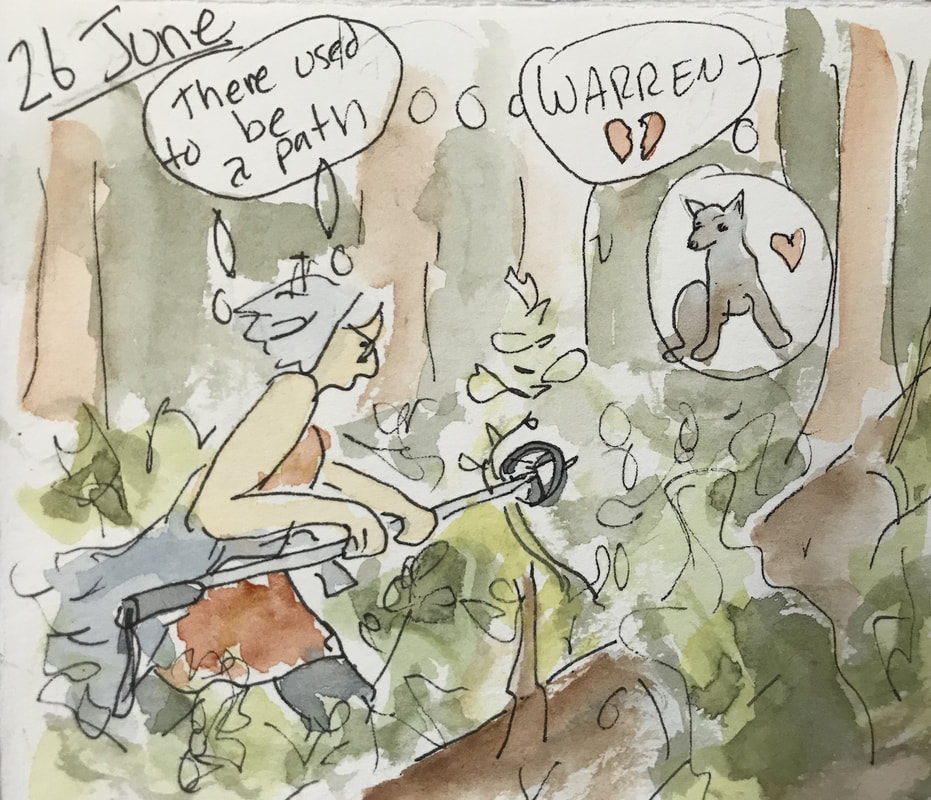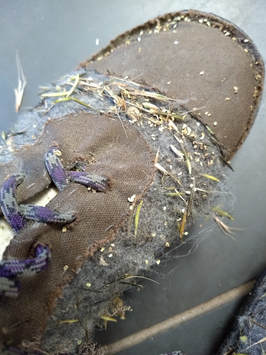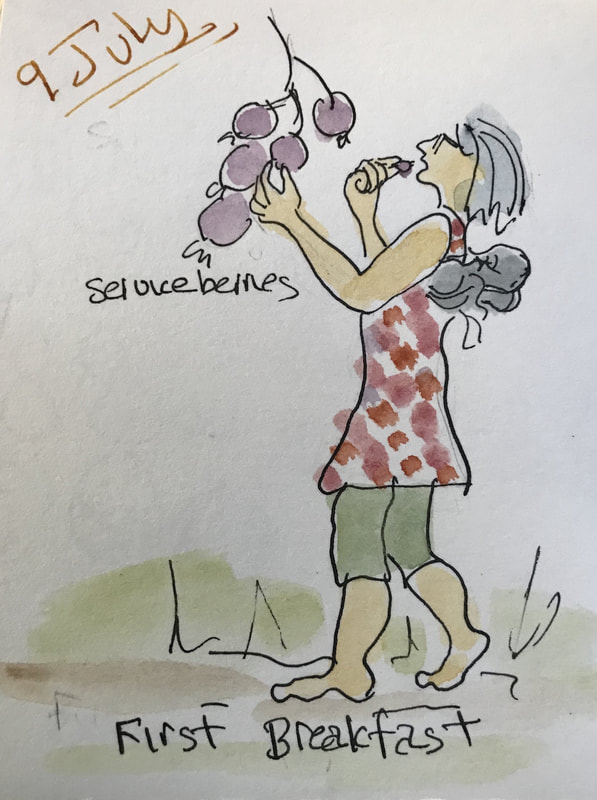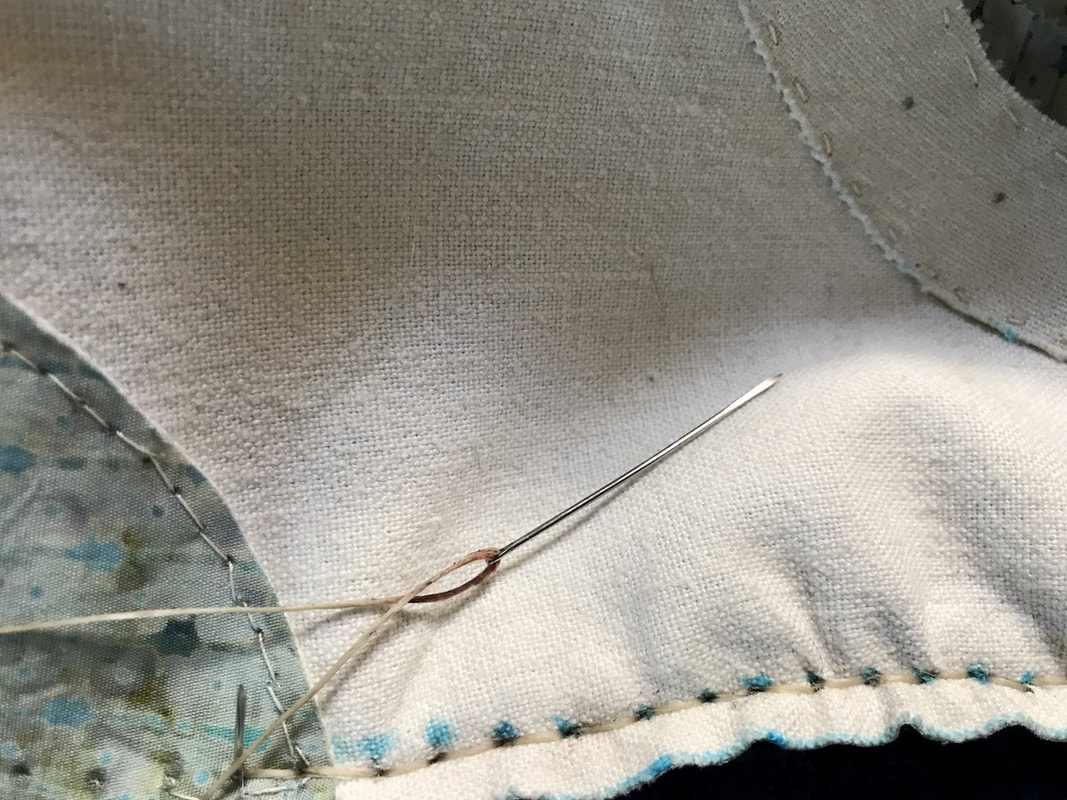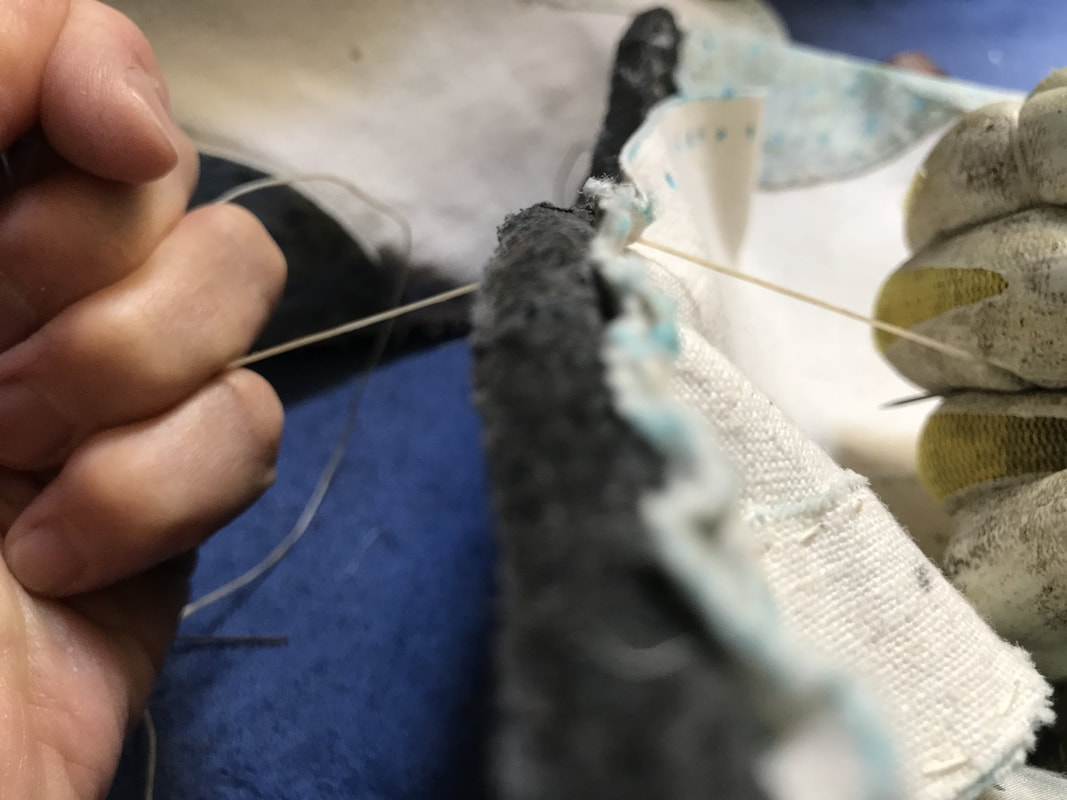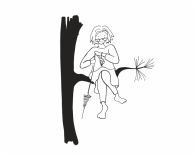while sewing the soles
onto a new pair of running shoes,
is that the very act of construction
is a kind of pathway
further into--
and also further away from
my daily life.
Immediate tactile engagement
with materials I love
and objects I use
helps me,
both literally and figuratively,
to feel the ground as I walk.
when the soles of my handmade shoes
are worn through--
I whipped off in April--
quill-like
hitchhiking seed
around.
Using the things I've made,
can give shape to the days.
Drawing them
gives me some perspective,
even, sometimes,
subtly tweaking
the way I feel.

about the the state of those shoes.
Grumpy about miles of overgrown trails,
sad about the loss of dead friends
(one of whom used to do a lot of trail clearing on my behalf),
and in pain because those seeds are SHARP.
I felt at a complete loss.
But drawing it into my diary,
(both in the moment and later),
I remembered that it's not the fault of the plants
(just trying to propagate the world as we humans do),
or the shoes
(they'd been doing a great job for months),
but rather that I had the wrong clothing
for that moment,
and that with a little bit (lot) of effort
with needle, branch loppers, thimble and weed whacker,
it would all be just fine.
If nothing else,
I at least could see a way to proceed.
the bulk of the barbed and painful seeds,
the grey felt shoes work fine once again--
at least for town runs--
and when they are on my feet.
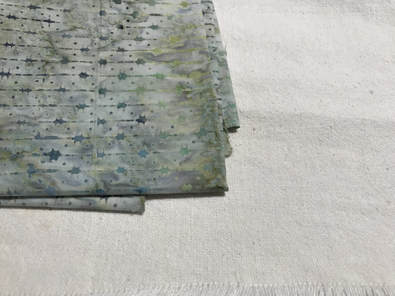
so a new pair was still in order --
something with no nap
for burrs.
laminated to a scrap of cotton
seemed like a grand idea,
so away we went.
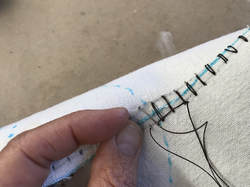
(which sews like butter),
this stuff is tough.
But that is what I wanted, right?
And pre -punching the holes helped a lot.
Though not entirely.
if all this noticing
didn't involve callouses and blood --
(glovers needles are made, duh, to slip through skin),
but it sure makes what might otherwise be a mundane task
a time of edgy productivity --
(micro drama in every stitch),
with moments of great satisfaction.
it is probably time to finish stitching on those soles.
The new four selvedge students
are running off without me
*Cordwainer: The term cordwainer entered English as cordewaner(e), from the Anglo-Norman cordewaner (from Old French cordoanier, -ouanier, -uennier, etc.), and initially denoted a worker in cordwain or cordovan, the leather historically produced in Moorish Córdoba, Spain in the Middle Ages, as well as, more narrowly, a shoemaker.[6] The earliest attestation in English is a reference to “Randolf se cordewan[ere]”, ca. 1100.[1][6]According to the OED, the term is now considered obsolete except where it persists in the name of a trade-guild or company, or where otherwise employed by trade unions.
(from Wikipedia)
So technically I am not a cordwainer.
I don't belong to a trade-guild,
(at least not one that has anything to do wtih footwear
though I am a member of the Palouse Hills Weaver's Guild
and thus of the Association of Northwest Weaver's guilds),
and if I use leather, it is local buckskin
(possibly from a deer shot by my aunt).
But eleven generations back,
John Swett (1575-1651)
who immigrated to Newbury, MA in 1630*
with his wife Sarah,
apparently was.
So, close enough.
Though I bet he didn't get his leather from Córdoba, Spain either.
*Shoemakers, tanners, and other tradesmen arrived in Jamestown (Virginia) by 1610, and the secretary of Virginia recorded flourishing shoe and leather trades there by 1616. The first English shoemaker to arrive in America whose name has been preserved, was Christopher Nelme, who sailed from Bristol, England and reached Virginia in 1619. Nearly one year later, the first Pilgrim settlers landed in Massachusetts. The first shoemakers who followed the trade there arrived in 1629.
from The Honourable Cordwainer's Company website --"What is a Cordwainer"
** The dates and names of my relations are from the book Jockey Corners: Remembrances by Paul P. Swett, M.D., compiled and edited by Norris P. Swett M.D. and Steven C. Swett, Bragg Hill Press; Norwich, VT, 1997
***ALL shoes shown here are from patterns from Simple Shoemaking
